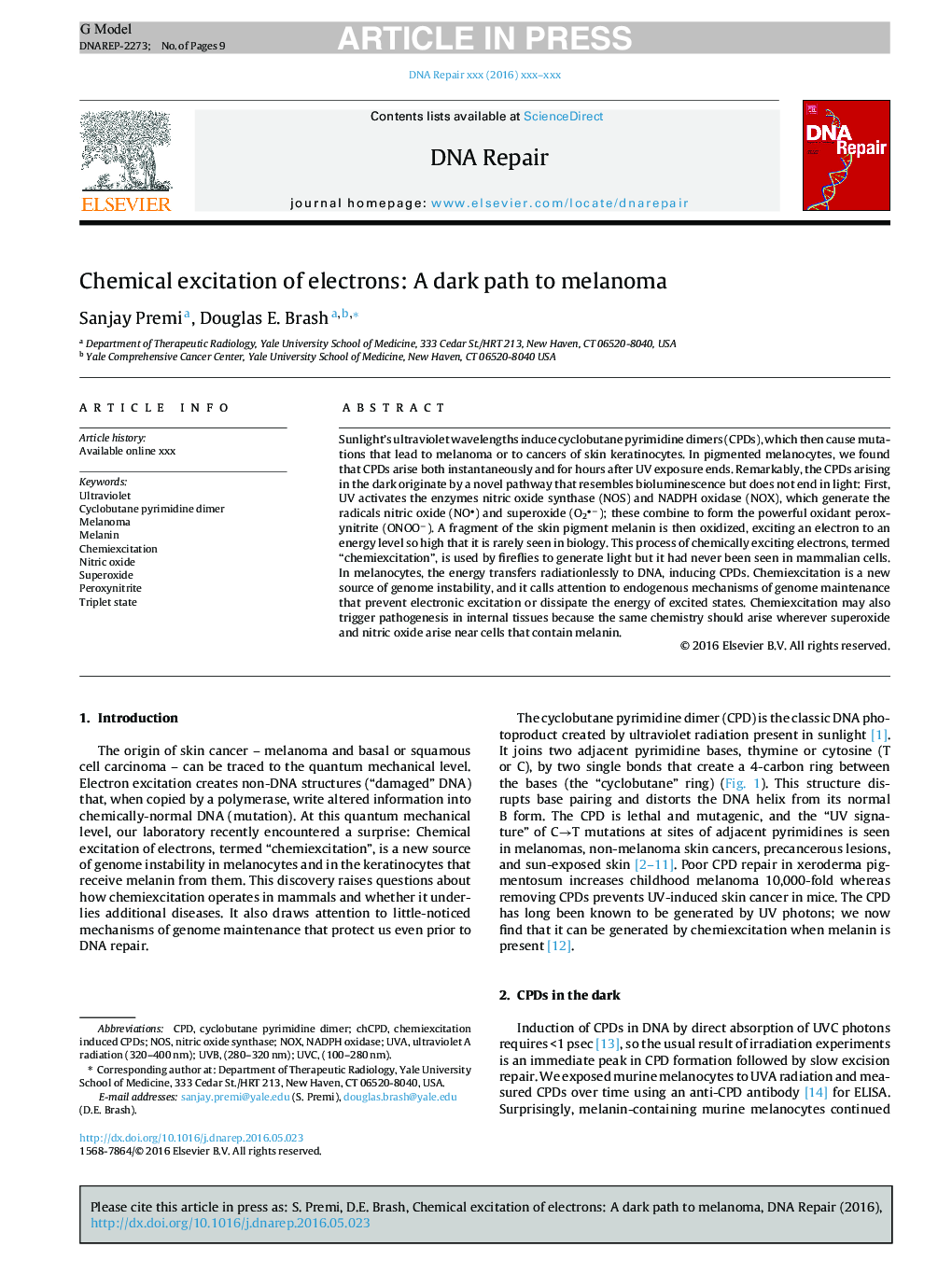| کد مقاله | کد نشریه | سال انتشار | مقاله انگلیسی | نسخه تمام متن |
|---|---|---|---|---|
| 8320502 | 1539384 | 2016 | 9 صفحه PDF | دانلود رایگان |
عنوان انگلیسی مقاله ISI
Chemical excitation of electrons: A dark path to melanoma
ترجمه فارسی عنوان
تحریک شیمیایی الکترونها: یک مسیر تاریک به ملانوم
دانلود مقاله + سفارش ترجمه
دانلود مقاله ISI انگلیسی
رایگان برای ایرانیان
کلمات کلیدی
NOSChemiexcitationUVBUVAUVCcpd - CPDNOx - NOXUltraviolet - اشعه فرابنفشNADPH oxidase - اکسیداز NADPH Melanoma - خال سرطانی یا ملانوماTriplet state - دولت سه گانهcyclobutane pyrimidine dimer - دییریر پیریمیدین cyclobutaneSuperoxide - سوپر اکسیدmelanin - ملانینNitric oxide - نیتریک اکسیدnitric oxide synthase - نیتریک اکسید سنتازPeroxynitrite - پروکسی نیتریت
موضوعات مرتبط
علوم زیستی و بیوفناوری
بیوشیمی، ژنتیک و زیست شناسی مولکولی
زیست شیمی
چکیده انگلیسی
Sunlight's ultraviolet wavelengths induce cyclobutane pyrimidine dimers (CPDs), which then cause mutations that lead to melanoma or to cancers of skin keratinocytes. In pigmented melanocytes, we found that CPDs arise both instantaneously and for hours after UV exposure ends. Remarkably, the CPDs arising in the dark originate by a novel pathway that resembles bioluminescence but does not end in light: First, UV activates the enzymes nitric oxide synthase (NOS) and NADPH oxidase (NOX), which generate the radicals nitric oxide (NO) and superoxide (O2â); these combine to form the powerful oxidant peroxynitrite (ONOOâ). A fragment of the skin pigment melanin is then oxidized, exciting an electron to an energy level so high that it is rarely seen in biology. This process of chemically exciting electrons, termed “chemiexcitation”, is used by fireflies to generate light but it had never been seen in mammalian cells. In melanocytes, the energy transfers radiationlessly to DNA, inducing CPDs. Chemiexcitation is a new source of genome instability, and it calls attention to endogenous mechanisms of genome maintenance that prevent electronic excitation or dissipate the energy of excited states. Chemiexcitation may also trigger pathogenesis in internal tissues because the same chemistry should arise wherever superoxide and nitric oxide arise near cells that contain melanin.
ناشر
Database: Elsevier - ScienceDirect (ساینس دایرکت)
Journal: DNA Repair - Volume 44, August 2016, Pages 169-177
Journal: DNA Repair - Volume 44, August 2016, Pages 169-177
نویسندگان
Sanjay Premi, Douglas E. Brash,
